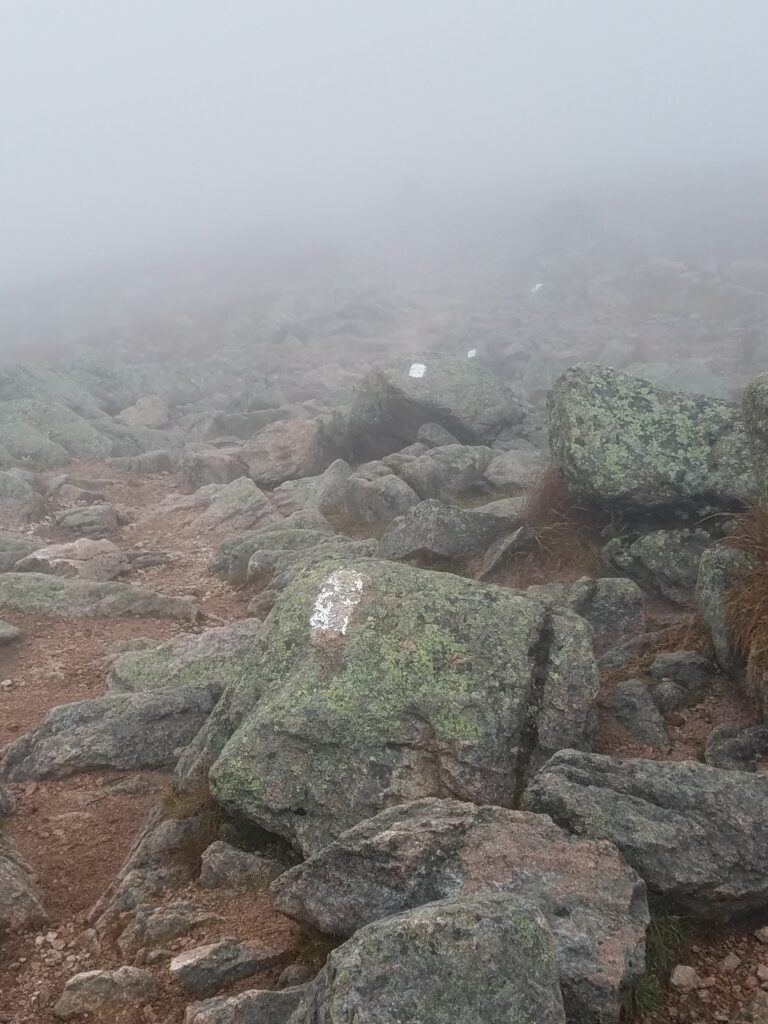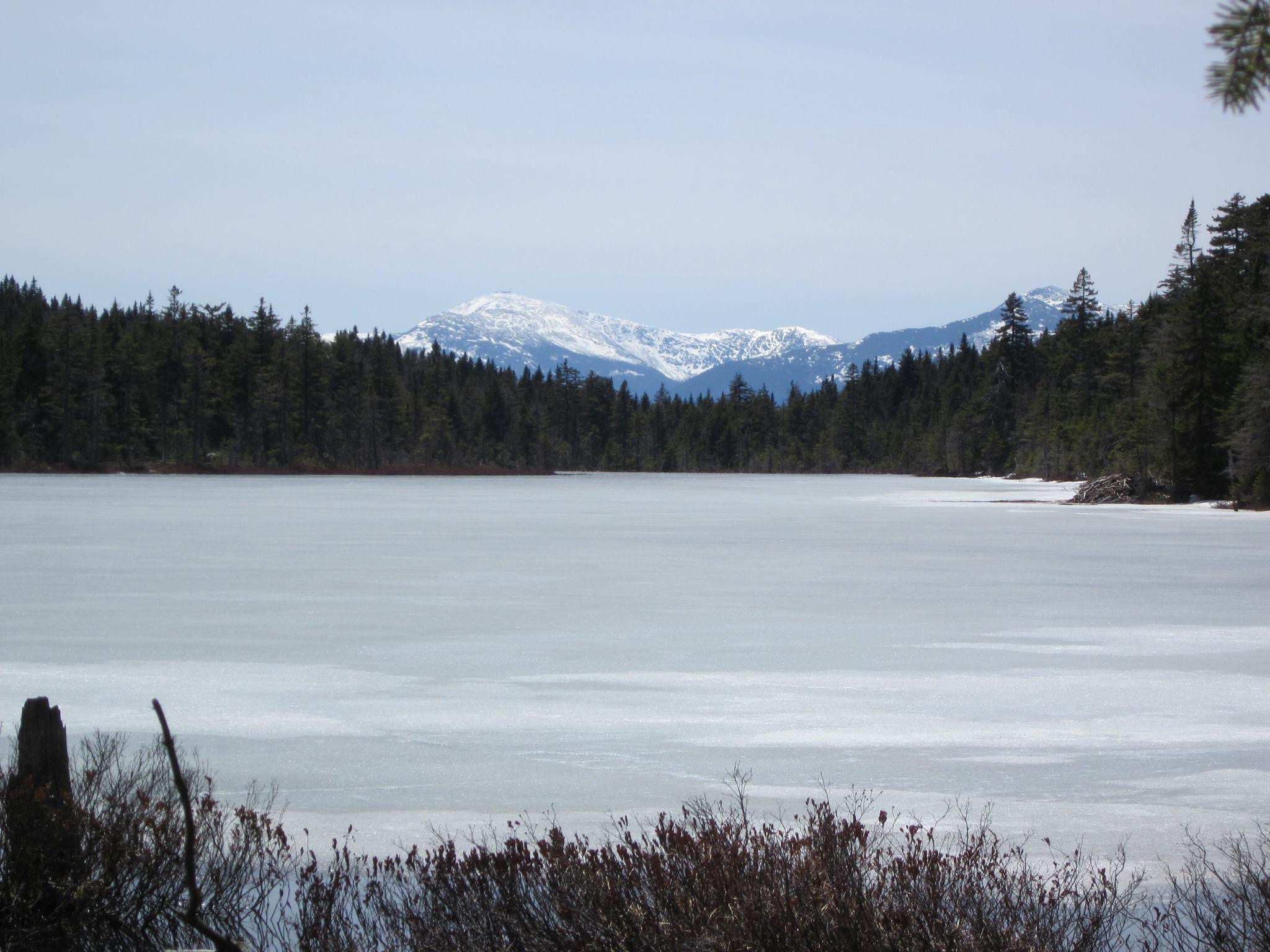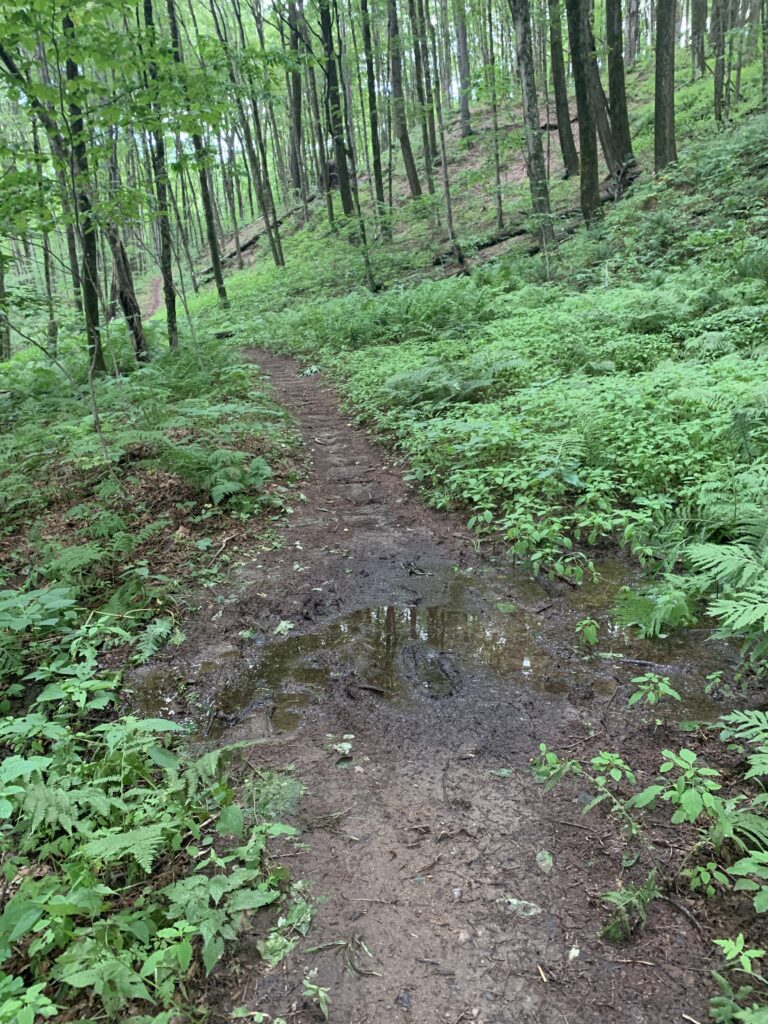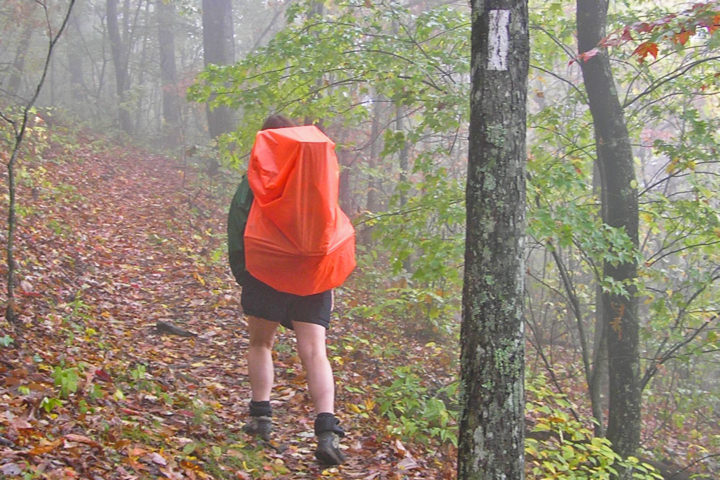Plan Ahead and Prepare
The 2024 Solar Eclipse: Know Before You Go
March 7, 2024
On April 8, 2024, parts of the southern, central, and eastern U.S. will see a total solar eclipse. All of the Appalachian Trail (A.T.) will see at least a partial eclipse, and much of the A.T. in Maine is directly in the path of totality, meaning that those parts of the Trail will experience total darkness in the middle of the day. This special event offers us a chance to experience our outdoor world in an out-of-this-world way.
Vermont, New Hampshire, and Maine are expecting thousands of visitors to flock to towns in the path of totality, and the A.T. may see thousands of new and familiar visitors in a single day. While some parts of the Trail may afford a clear view of this celestial phenomenon, the A.T. in the Northeast is incredibly fragile in the spring as it thaws out from the winter freeze.
With some preparation, you can enjoy the eclipse while staying safe and protecting the Trail during “mud season.”

Mud Season
Many folks who live in the Northeast will tell you that there are actually five seasons. “Mud season,” that fifth season between winter and spring, gets its name from the soft, rutted dirt roads that are characteristic throughout the region from late March through May. After the winter snow and ice melts but before things dry out in the spring sunshine, the ground is extremely wet and especially susceptible to damage.
Hiking on trails when they are saturated with water from snow and ice melt not only causes the footpath to widen and the thin, fragile topsoil to erode, but it also causes harm to the nearby plants and water sources (streams, brooks, rivers) from erosion run-off. On April 8, the A.T. in New England will likely be extremely muddy and fragile.
Mud Season & Eclipse Viewing

A common view on Maine’s summits: fog. Photo by Bethany Coomes.
To help protect the A.T. during this fragile time and get the best view of the eclipse, here are some tips and recommendations:
- You’ll likely get a better view of the eclipse at lower elevations since the Northeast mountains can often be shrouded in clouds even when it is sunny and clear in the valleys.
- Low-elevation fields and shores may provide a better view of the eclipse than the Green Tunnel – a fond nickname for the A.T. since it mostly winds through tree-covered forests with only occasional views.
- Many towns throughout Vermont, New Hampshire, and Maine are sponsoring eclipse events where visitors and residents can view the eclipse safely and sustainably. This includes some A.T. Communities. Bonus points for patronizing local businesses as part of your eclipse weekend!
- A.T. trailhead parking lots may reach capacity early on eclipse day, and parking along adjacent roads is prohibited in many places. Have a plan B and identify a viewing place in a nearby town with larger parking access.
If you choose the A.T. as your eclipse-viewing spot:
- Stick to sections that are below 2,500’ in elevation. These dry out faster than their higher-elevation counterparts.
- Take special care to walk through mud rather than around it. This helps prevent the footpath from widening. Wear sturdy, waterproof shoes so you can comfortably walk through muddy sections.
- Choose a durable surface to stop and watch the eclipse: bare rock; bare, hardened soil; and crusty snow are all low-impact options.
- Stay on the Trail as much as possible. Avoid going off the Trail or beyond existing campsites to help protect the surrounding fragile soil and spring plants.
- Carpool to the Trail to help reduce congestion at trailhead parking lots.
Eclipse Safety
No matter where you view the eclipse, safety always comes first! NASA has comprehensive eclipse safety tips to protect your eyes from the damage that can occur if you look directly at the sun with the naked eye or through a camera, binoculars, or telescope without special filters.
Along with eye safety, Trail safety is also critical. While packing the 10 Essentials (plus your eclipse glasses) and being prepared for the elements is important on the A.T. no matter the time of year, conditions are especially unpredictable as the Northeast shifts from winter to spring.

A view of the Presidential Range from Dream Lake in NH in May shows that snow and ice persist on the Trail well into spring.
If you choose to visit the A.T. for the eclipse:
- Be prepared to encounter snow and ice on the Trail in addition to mud. Snowshoes and traction, such as microspikes, may be needed.
- Check the forecast and be prepared for cold and rain, even if sunshine is predicted. Always bring an insulating layer and a rain jacket.
- Expect colder, windier conditions the higher up you hike. In general, you can expect the temperature to drop five to ten degrees with every 1,000’ of elevation you gain.

A mud spot in Vermont has been widened from hikers trying to keep their feet dry.
- Expect impassable rivers and streams. Many river crossings along the Trail in Maine are unbridged and rivers and streams will likely be swollen with ice-cold water from snow melt, making them especially dangerous. When in doubt, do not cross and be prepared to turn around. Learn more about river crossing safety on the A.T. here.
- Stick to familiar sections and carry a map and compass (and know how to use them together). Snow may still blanket the Trail and more remote sections may not have had any other visitors since the fall. This means that the Trail may be difficult to follow, especially since white blazes can blend in with the snow.
- Be aware that emergency services may be delayed or unavailable due to the large influx of visitors to small Trailside towns.
Keep in mind that the Trail is not maintained for winter use and northern sections often still see winter conditions through April. Many seasonal roads will also still be closed. Mud season ruts and wallows will likely be on full display on the open dirt roads, so a higher clearance and all-wheel or four-wheel drive vehicle is best for venturing off the beaten path. Check seasonal road closures here.

Snow makes the Trail hard to follow even into June, as shown here in Maine’s Bigelow Range.
Eclipse Information from A.T. Partners
ATC’s Northeast Trail management partners have great information about how and where to enjoy the eclipse in their sections:
- Baxter State Park (the land manager for the A.T.’s northern terminus in Maine)
- The Appalachian Mountain Club (the A.T. Club in New Hampshire’s White Mountains)
- The Green Mountain Club (The A.T. Club in Vermont)
For information about eclipse events in A.T. Communities, visit each community’s page on our website.
We hope these tips help you enjoy this awe-inspiring moment while protecting the Trail we all love.
Discover More

BACK TO THE BASICS
Leave No Trace
Wondering how you can take care of outdoor places like the Appalachian Trail (A.T.)?

Plan and Prepare
Safety
Learn about the hazards you may face when hiking the Appalachian Trail and how to avoid or prepare for them is the best way to stay safe.

Plan and Prepare
Hiker Resource Library
A collection of resources for hikers to stay safe, healthy, and responsible on the Appalachian Trail.





